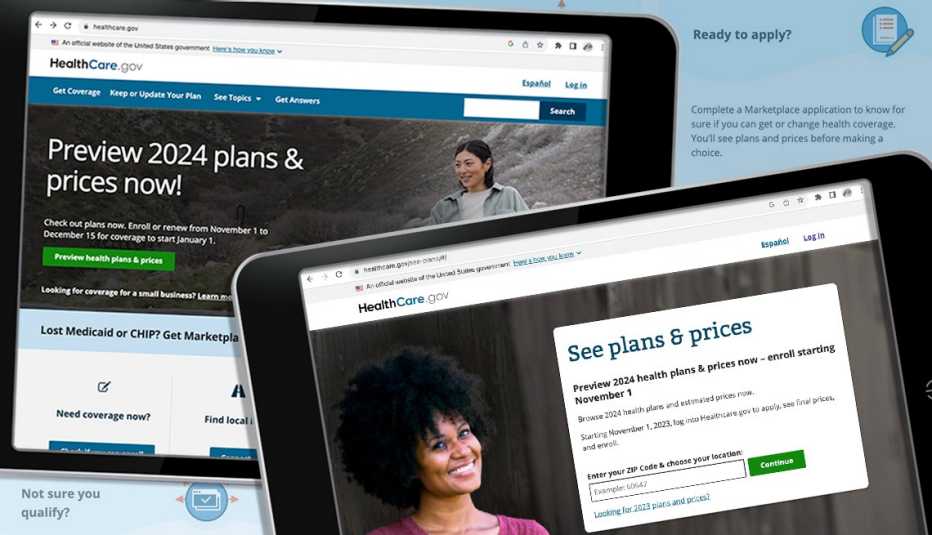AARP Hearing Center


Open enrollment for Americans who get their health care coverage through the Affordable Care Act’s (ACA) federal marketplace have until 5 a.m. Eastern Time on Wednesday, Jan. 17 to sign up for or change their plan. That will also be the open enrollment deadline for most people who get their health plan through a state exchange.
The average monthly premiums for health insurance sold through all ACA marketplaces are projected to increase by about 5 percent in 2024, but those hikes are expected to be offset by federal subsidies available to most Americans.
The 11th annual open enrollment period for the program is the one time during the year when most people can sign up for individual health insurance coverage or change the plan they have.
Those who live in the 37 states that are part of the federal marketplace can go to healthcare.gov to review their coverage or to sign up. Usually, Jan. 15 is the final day for federal ACA open enrollment, but because Jan. 15 will be the celebration of Martin Luther King Jr.’s birthday, consumers will have until 5 a.m. ET on Jan. 17 to enroll.
Thirteen states and the District of Columbia operate their own marketplaces, and in seven of those states, the open enrollment period differs from the federal window. In California, New Jersey, New York, Rhode Island and Washington, D.C., residents have until Jan. 31 to sign up. Massachusetts consumers have until Jan. 23 to enroll, and Idaho’s open enrollment period began on Oct. 15 and ends Dec. 15. Consumers can find a link to their state marketplace at healthcare.gov.
Satisfied with your insurance? It’s still a good idea to shop the marketplace, health experts say.
“Even if you like your current plan, these markets change so much from year to year that the plan that was best for you this year may no longer be the best plan for you next year,” says Cynthia Cox, a vice president at the nonpartisan KFF and head of its ACA program. “Premiums, provider networks, prescription drug costs and deductibles can all change, so it’s important to reassess your options every year.”
People who miss the open enrollment period may qualify for a special enrollment period, including those who have been affected by a natural disaster, have lost job-based coverage or who no longer qualify for Medicaid, the federal-state health insurance program for people with low incomes.
Cox says the expansion of Medicaid benefits during the pandemic expired, so millions of Americans have been disenrolled from that program. “People who are no longer eligible for Medicaid should check healthcare.gov or their state exchange to see if they’re eligible for financial help,” she says.



































































More on Health
Federal Rule Would Curb Junk Insurance Plans
These plans tend to have extremely limited coverage
Millions Skimp on Prescription Meds Due to Cost
An estimated 9.2 million adults cut back on prescriptions to save money in 2021
Millions on Medicaid in Jeopardy as Pandemic Protections Expire
What to do if your state terminates your health coverage